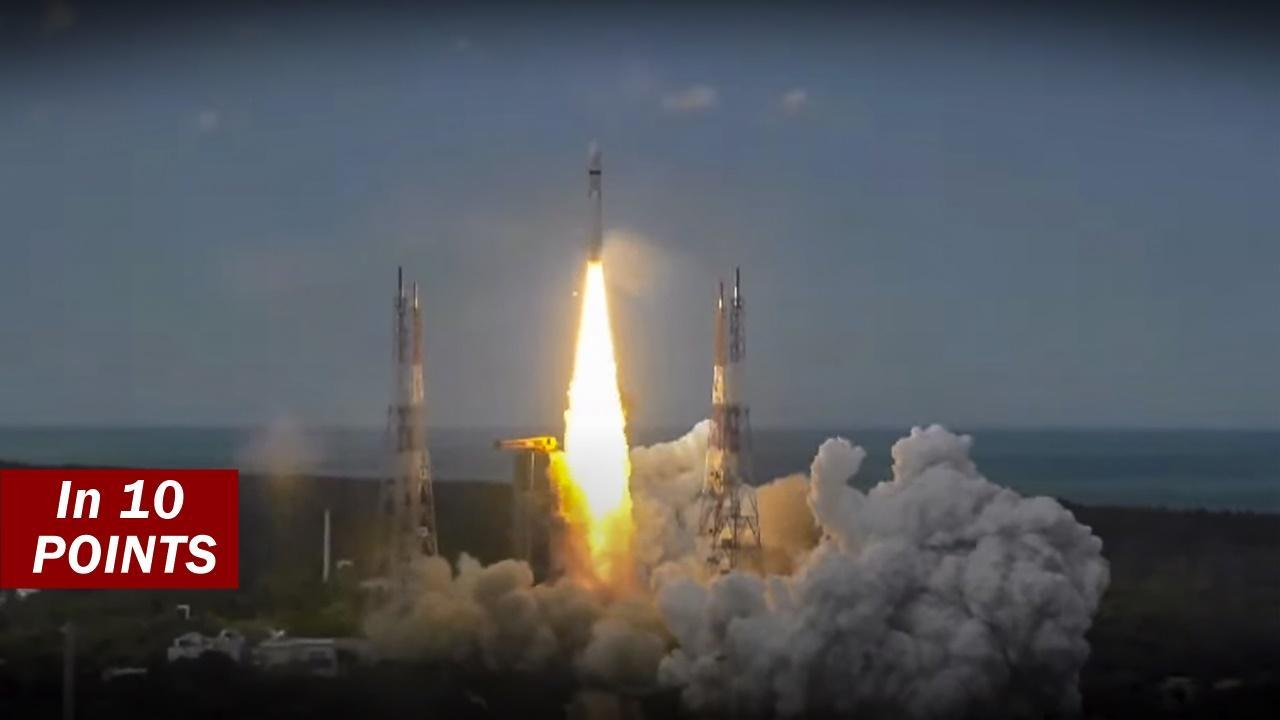Chandrayaan-3 is equipped with a lander, a rover, and a propulsion module, weighing approximately 3,900 kilograms

The spacecraft is expected to take about a month to reach the moon from Earth, with the landing scheduled for August 23
Chandrayaan-3, India's third lunar exploration mission, successfully took off at 2:35 pm amidst cheers and excitement at Shriharikota, Andhra Pradesh. Here are 10 major facts about this crucial mission:
Follow-up Attempt: Chandrayaan-3 is ISRO's follow-up attempt after the Chandrayaan-2 mission faced challenges during its soft landing on the lunar surface in 2019 and was deemed to have failed its mission objectives.
Launch Rehearsal: Prior to the launch, ISRO concluded a launch rehearsal that simulated the entire preparation and process, ensuring readiness for the mission.
Lunar Payload: Chandrayaan-3 is equipped with a lander, a rover, and a propulsion module, weighing approximately 3,900 kilograms.
Eight Payloads: The mission features eight payloads, including instruments carried by the Vikram lander, Pragyan rover, and the Orbiter's propulsion module.
Experiments: The Vikram lander carries several experiments, such as the Chandra's Surface Thermophysical Experiment (ChaSTE) to measure surface thermal properties, Instrument for Lunar Seismic Activity (ILSA) to study seismicity, and the Radio Anatomy of Moon Bound Hypersensitive ionosphere and Atmosphere (RAMBHA) to study the gas and plasma environment.
Pragyan Rover's Instruments: The Pragyan rover carries two instruments: the Alpha Particle X-ray Spectrometer (APXS) to determine the elemental composition of lunar soil and rocks, and the Laser Induced Breakdown Spectroscope (LIBS) for qualitative and quantitative elemental analysis of the lunar surface.
Orbiter's Experiment: The Orbiter carries the Spectropolarimetry of Habitable Planet Earth (SHAPE) experiment to study Earth's spectral and polarimetric measurements from lunar orbit, aiding the analysis of reflected light from exoplanets and their habitability.
Estimated Journey Time: The spacecraft is expected to take about a month to reach the moon from Earth, with the landing scheduled for August 23.
Operational Duration: Once landed, Chandrayaan-3 will operate for one lunar day, which is equivalent to approximately 14 Earth days.
Morale Boost for Space Missions: The success of Chandrayaan-3 is expected to provide a morale boost for future missions, including Gaganyaan, India's first manned space mission.
Chandrayaan-3's development began in January 2020, and despite unforeseen delays caused by the Covid-19 pandemic, India remains determined to achieve significant scientific milestones and expand its understanding of the lunar surface.
(With inputs from agencies)
 Subscribe today by clicking the link and stay updated with the latest news!" Click here!
Subscribe today by clicking the link and stay updated with the latest news!" Click here!










